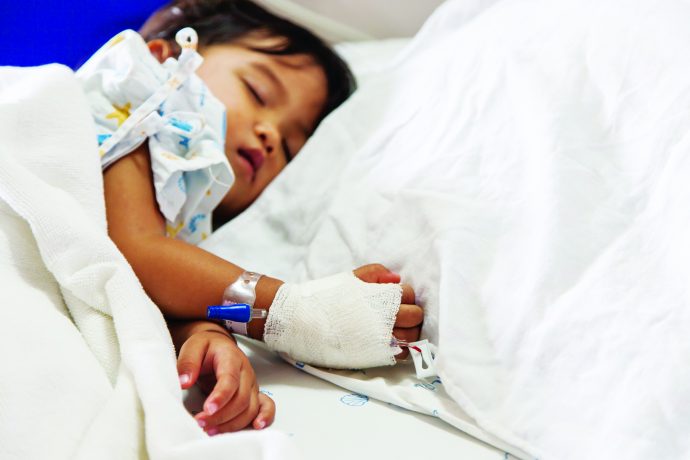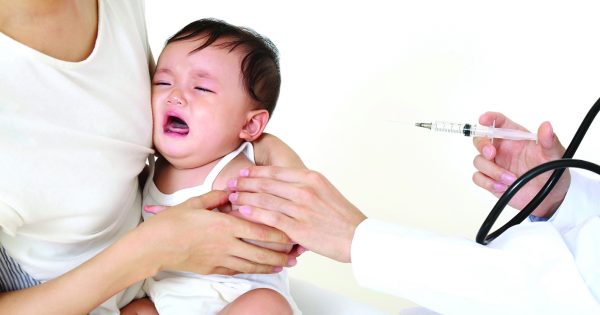When children are infected with COVID-19, navigating the different treatments for children can be overwhelming. With cases rising at the start of the new year, it is important for parents to ensure the best care for their little ones in the face of a COVID-19 infection.
The clinical stages of COVID-19
Stage 1 & 2: Mild Disease
- Can be asymptomatic or symptomatic with no pneumonia.
- Stage 1 refers to asymptomatic individuals – meaning they have a positive COVID-19 test results, but no physical symptoms.
- Stage 2 refers to symptomatic individuals with no pneumonia (infection of the lungs) – meaning they show physical symptoms like congestion, sore throat, cough, or fever for less than 7 days.
Stage 3: Moderate Disease
- Refers to infected individuals who exhibit the physical symptoms mentioned above, alongside an infection of the lungs (pneumonia). This causes an increased effort to breathe and respiratory rate.
- Additional symptoms may also occur, such as vomiting, diarrhoea, abdominal pain, fatigue, and loss of smell/taste.
Stage 4: Severe Disease
- Refers to infected individuals who exhibit physical symptoms, have pneumonia, AND require supplemental oxygen.
- Additional symptoms that affect different organ systems may also occur. For example, the nervous system (i.e. lethargy, decreased level of consciousness, seizures, etc.), and digestive system (i.e. dehydration, difficulty feeding, etc.).
Stage 5: Critical Illness
- Refers to infected individuals with rapid disease progression. These individuals commonly experience respiratory failure and require mechanical ventilation.
- These individuals can present with or without other organ failures (e.g. heart failure, liver injury, kidney injury, etc.).
Treatments for various age groups
Children & Adolescents
At the time of writing, there is currently no one medicine or therapy that effectively treats children and adolescents infected with COVID-19. But the good news is, most infected children get better with supportive care, which may include the following:
- Antipyretics (e.g. paracetamol) – To reduce fever that arise during COVID-19 infection.
- Supplemental oxygen – To provide additional oxygen, which relieves breathing difficulties, and prevents complications related to insufficient oxygen in the body.
- Intravenous hydration – Direct administration of fluids into the veins. This is a quick way to restore electrolytes, maintain fluid balance, and prevent dehydration.
- Antibiotics – Antibiotics may be used if a secondary bacterial infection occurs.
Adults
In most cases, supportive care is also sufficient enough for adults infected with COVID-19. For individuals with mild-moderate infections, antivirals may be used, especially in those who are unvaccinated, have incomplete vaccination, or has risk factors (e.g. obesity, chronic heart conditions, etc.). On the other hand, if severe or critical disease develops, more aggressive treatments like immune-modulators or anticoagulation therapy may be used.
The role of vaccinations in controlling COVID-19
Recent studies in adults have indicated that the COVID-19 vaccines are effective. In fact, a local study found that chances of death due to COVID-19 infection is 40x lower with two doses and 62x lower with a booster. The COVID-19 vaccine can also prevent severe illness and hospitalisation.
In addition to this, the vaccine also reduces the risk of transmitting the virus to others, which is particularly important in children, as it contributes to the overall family’s safety, keeps them in school, and contributes to the community-wide effort to reduce the spread of COVID-19. In Malaysia, COVID-19 vaccination is recommended for all children aged 5-11 years. Speak to your doctor to learn more about COVID-19 vaccinations in children.
|
All about the booster shots Who should get booster shots? Boosters are recommended for vulnerable groups like those with health conditions (NCD), seniors, and individuals with high blood pressure or diabetes. These groups can benefit significantly from the added protection provided by the third dose, known as the booster dose. When to get booster shots? For high-risk individuals aged 12 to 17, wait three months after the third primary dose before getting the first booster. Those 18 and above should go for their second booster six months after the first. Consult medical professionals for personalised advice on the second booster. Where to get booster shots? Speak with your doctor to learn more about where to get booster shots. |
When it comes to COVID-19, it is important for parents to understand the different stages of infection and available treatments. While specific treatments and therapy protocols for children are constantly being updated, the majority of infected children recover with supportive care. Vaccinations significantly reduce the risk of severe illness, benefiting not only individuals but the broader community. As the saying goes, “Prevention is better than cure”, and as parents, staying informed and updated on treatment options for COVID-19 in children is paramount.






